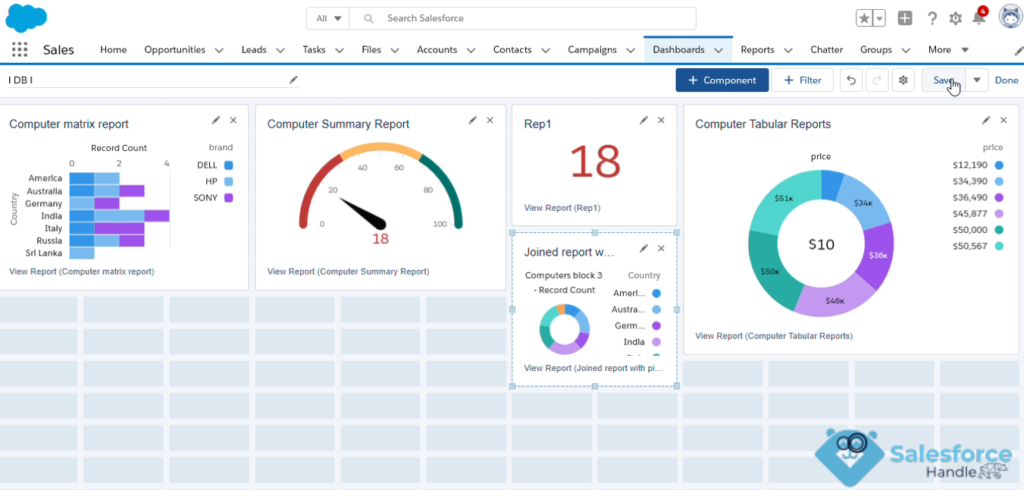Navigating through the vast array of cloud-based solutions for your businesses can be overwhelming. This blog breaks down the choices: Salesforce Lightning vs Vahana Cloud, two prominent competitors, for you to make an informed decision.
Table of Contents
ToggleChoosing between the two requires a comprehensive knowledge of their strengths, weaknesses, and how they align with your business objectives. So without any further ado, let’s discuss the range of features and functionalities they offer that are aimed to enhance productivity, streamline processes, and drive growth.
An Overview: Salesforce Lightning vs Vahana Cloud
Vahana Cloud

Driven by the philosophy Create while you Ideate, Vahana Cloud is a no-code platform that allows you to create web and mobile apps for enterprises with robust middleware.
Launched in 2018, Vahana Cloud is used by 7 of 10 top private banks in India. Kotak 811, Induslnd Bank, and AU ABHI are some of the banks that have trusted this platform for their internal applications.
It has four core modules and other supporting modules to build enterprise-level applications. It has modules to support 4 stages of development: design, integration, deployment, and monitoring. These further consist of vDesigner, vFlow, vConnect, vScheduler, etc.
They even have an API marketplace – Vahana hub for fintech journeys, that consists of 10000+ APIs from 80+ providers.
Salesforce Lightning

Salesforce Lightning was launched in 2015, as a cloud-based version (PAAS) of Salesforce. Simply put, it is a component-based framework where you can build applications, integrate data, and automate business processes.
Lightning was built keeping in mind the people with non-coding knowledge, introducing exciting tools and components. Salesforce was built as cloud-based CRM software that later expanded to a low-code/no-code platform.
With Salesforce lightning, you can optimize Salesforce pages, and accelerate app custom development, and performance. It can be used for different purposes based on the nature of users, such as business users, developers, and admin.
Additionally, around 150 functionalities and features were introduced in the Salesforce lightning including Opportunity Workspace, Opportunity Kanban, lightning application builder, Steelbrick Feature, Outlook Alliance, etc.
Core Functionalities
Vahana Cloud
- What You See Is What You Get (WYSIWYG) – You can review your designs in real time on your canvas. To rephrase it, you can see the look and feel of your application and what it will look like in different form factors.
- Reusable Components – The basic building blocks such as APIs and task groups available on the vDesigner module of Vahana Cloud are reusable. You can use them for multiple use cases.
- Middleware Reusability – With vConnect, you can create a middleware with a set of APIs connected with multiple front-end applications.
- Themes & Styles – You can customize the default theme on the vDesigner as per your requirements. Temporarily apply the customized theme to the under-development application and confirm that the theme matches the required visual pattern of the application.
- Preview in Different Form Factors – When you build screens on vDesigner, you can preview what the page will look like on different builds such as on Android, iOS, and the web.
Salesforce Lightning
- Outlook Alliance – The union between Salesforce and Microsoft is a game-changer. You can easily sign in Lightning platform by using an Outlook account. This implies that you do not have to jump in between different programs.
- AppExchange – This feature allows you to integrate third-party applications in the Salesforce AppExchange platform. They have approximately 157 lightning-ready third-party applications.
- Latest Technology – This component-based framework is packed with the most updated technological advancements that assist businesses in improving customer and interdepartmental relations.
- Lightning Component Framework – It includes various tools and technologies that are meant for the development of web pages and mobile applications.
- Lightning Application Builder – You do not have to be a hardcore coder. Anyone can customize pages and relocate the lightning component to pin up the applications.
User Experience: Navigating Salesforce Lightning and Vahana Cloud

Think of a good user experience as a smooth, well-paved road that gets users to their destination quickly and efficiently. Conversely, bad UX is like a maze, with confusing directions, leaving users frustrated and lost.
A smooth UX determines the value of a business and whether the customers will like to have a future business with a particular enterprise. It is imperative to see which platform interface and functionalities are easily accessible.
You should be able to easily navigate through the dashboard for any services. Be it automating your workflow, CRM software, building applications, etc., you should be able to seamlessly cruise through the software.
One of the ways you can accomplish this and decide is by asking for a demo. This will aid you in making a rightful informed decision. Both Salesforce Lightning and Vahana Cloud offer this service.
Make judicious use of this option and figure out which platform has a much better user experience.
Also Read : Navigating UI/UX Hurdles Effortlessly with No-code
Making the Right Choice: Aligning Your Needs

Leave no stones unturned, that’s right. The platform that you are going to choose will affect your operations, which further will influence your business in the long run. It is not one size fits all, so carefully evaluate all the factors of both platforms and pick the one that aligns with your needs.
The first thing you should consider is to write down your objectives. This will assist you in matching your enterprise objectives with the services of both platforms.
However, there is one significant difference between both platforms that one should consider while making a choice. Read on to know what difference I am talking about.
Unveiling the Distinctions: Salesforce Lightning or Vahana Cloud
Salesforce is one of the leading software when it comes to CRM. More than 1,50,000 businesses use Salesforce services. Shocking right?
It is a low-code/ no-code platform that is used by business users, admins, and developers for different purposes. For instance, business users use CRM to collect valuable data about their clients, track deals, and close them efficiently. So, if you’re looking to optimize the UI of your Salesforce CRM and increase the productivity of sales and service teams, Salesforce Lightning is the right choice for you.
On the other hand, Vahana Cloud is a no-code platform that enables you to build and deploy applications in much less time compared to the traditional method of creating applications. You can even automate your workflow and build dashboards efficiently. Using no code to build applications is the future of software development and to sustain in this competitive world, one must hop on this bandwagon.
Additionally, Vahana Cloud is trusted by leading private banks, which is a testimonial to the authenticity and the work commitment of this platform.
Also Read: Why use no-code to build apps?
Choose Your Path: Salesforce Lightning or Vahana Cloud
Now that we have broken down the choices and listed the functionality and features of Salesforce Lightning and Vahana Cloud, the option to choose hinges on your needs.
By carefully analyzing factors such as intuitive interface, reusable components, themes, and styles, determine which platform aligns the best with your requirements. Both Salesforce Lightning and Vahana Cloud offer powerful solutions to drive your business forward in this digital age.
The choice is yours now!
